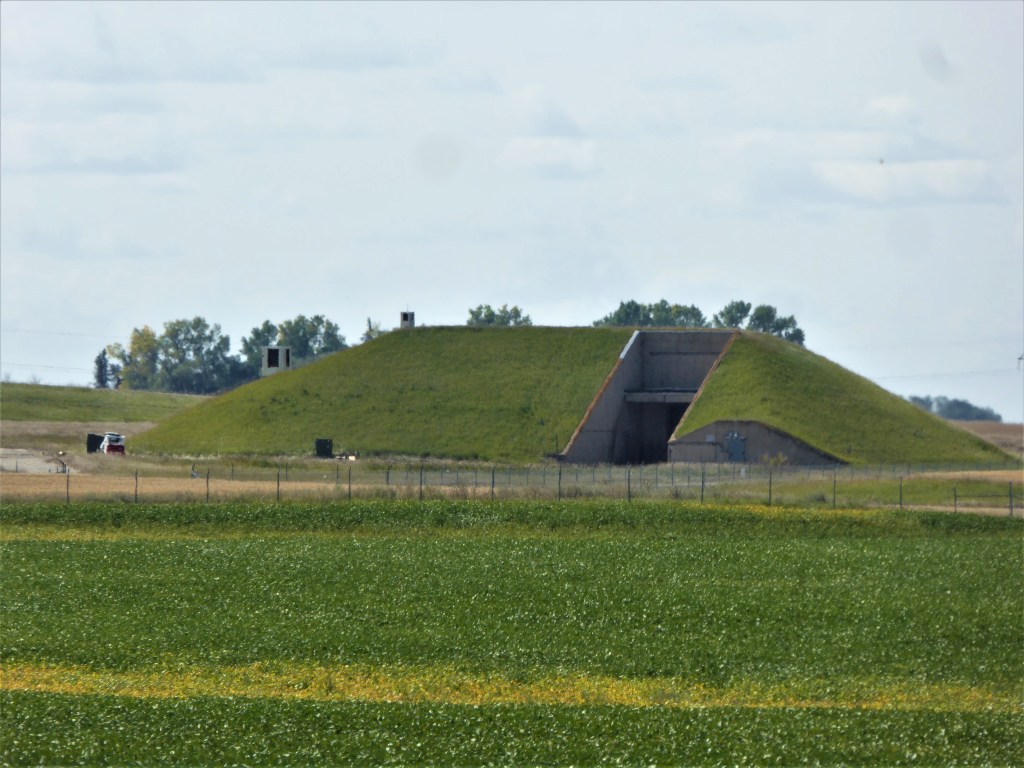From Cold War relic to high-tech tourist attraction
Published 7:30 am Saturday, April 15, 2023

- The Universal Missile Building was used for preparation and maintenance of the anti-ballistic missiles. A separate earthen bunker was used to store nuclear warheads.
On July 25, 2022, the governor of North Dakota announced Bitzero Blockchain, Inc. agreed to acquire and redevelop one of America’s most unusual properties, a 1970s-era anti-ballistic missile complex that was closed shortly after becoming operational in 1975.
Bitzero, a firm engaged in digital asset management and cybercurrency mining, is expected to convert the complex into a secure data center with computer-generated waste heat utilized to warm a large on-site greenhouse. Construction of an interpretive center is also part of the plan.
The Stanley R. Mickelson Safeguard Complex, located 75 miles northwest of Grand Forks, North Dakota, near the small community of Nekoma, is best-known for its central feature, “The Pyramid,” a massive truncated cement pyramid that once housed a powerful radar assembly.
Numerous ABM silos and an underground generator were also in the complex constructed during a five-year period in the early 1970s. The radar was designed to assist in guiding nuclear ABMs to intercept enemy intercontinental ballistic missiles before they could destroy America’s own ICBMs prior to launch.
Safeguard evolved from an earlier ABM Sentinel program designed to protect America’s major cities. Sentinel was terminated following criticism from experts who claimed its goal was technically unworkable at the same time city residents made it clear they had no interest in living near nuclear-armed weapons.
Sentinel evolved into Safeguard that would protect America’s ICBMs rather than its cities. The program was controversial from its beginning with scientists asserting the proposed system was too costly and would in any case be ineffective.
Despite widespread criticism, the program received U.S. Senate approval in 1969 by a single vote. The initial plan called for a dozen sites, but the program was subsequently downsized to three facilities (Missouri, Montana, and North Dakota) before congress voted in 1975 to shut down and dismantle the lone working site in North Dakota shortly after full operation had been achieved.
According to the New York Times, the Defense Department invested $5.7 billion (equivalent to $32 billion in today’s dollars) in a system that was fully operational for a matter of days.
Serving in a caretaker role until 2002 when the facility was abandoned, the federal government declared the complex as surplus property and in 2012 began soliciting bids from potential purchasers. The contest was won by a North Dakota Hutterite colony whose bid of $530,000 was $30,000 greater than a competing bid by the local development authority.
Five years later, using funds from a state Department of Commerce grant, the development authority purchased the facility’s tactical area (missile silos, two bunkers, generator housing and the radar pyramid) for $462,900. According to the local newspaper, the development authority hoped to use the site for attracting tourists and businesses.
Our September visit to the North Dakota Safeguard site offered an image of what could easily be imagined as an abandoned community of extraterrestrials who returned to their home planet after tiring of the long North Dakota winters.
We were unable enter the fenced facility, but nearby public roads offered excellent views of not only the giant pyramid that was visible from a considerable distance, but also numerous generator vents, bunkers that once held nuclear warheads and abandoned administrative buildings. Despite the lack of activity and our inability to access the property, the visit proved quite interesting.
It is difficult to determine if redevelopment of the abandoned facility will be successful. Lack of cryptocurrency regulation combined with several bankruptcies of major firms including crypto exchange FTX and lenders Celsius Network and Voyageur Digital tend to make this a risky project. At the same time crypto mining is being hit with rising expenses due to its need for large amounts of energy.
The isolation of the North Dakota property is less than ideal for turning the site into a tourist attraction. The property is in a rural area 30 miles south of the Canadian border, an excellent location for an ICBM or ABM site, but not particularly conducive to attracting large numbers of travelers.
Fortunately, three related Safeguard sites are in close proximity. Eighty-five miles south, Ronald Reagan Minuteman Missile State Historic Site offers public tours at an ICBM missile control site. Six miles away from the control facility is the topside of one of its launch sites. Thirty miles northeast of Nekoma, RSL 3 Missile Site, one of Safeguard’s four remote anti-ballistic missile launch facilities is privately owned and open for public tours.
The four sites as a package make for an interesting day of learning about a period in America’s history that unfortunately appears to be returning.
David and Kay Scott are authors of “Exploring the Oregon Trail: America’s Historic Road Trip” (Globe Pequot). They live in Valdosta. Visit them at blog.valdosta.edu/dlscott.



